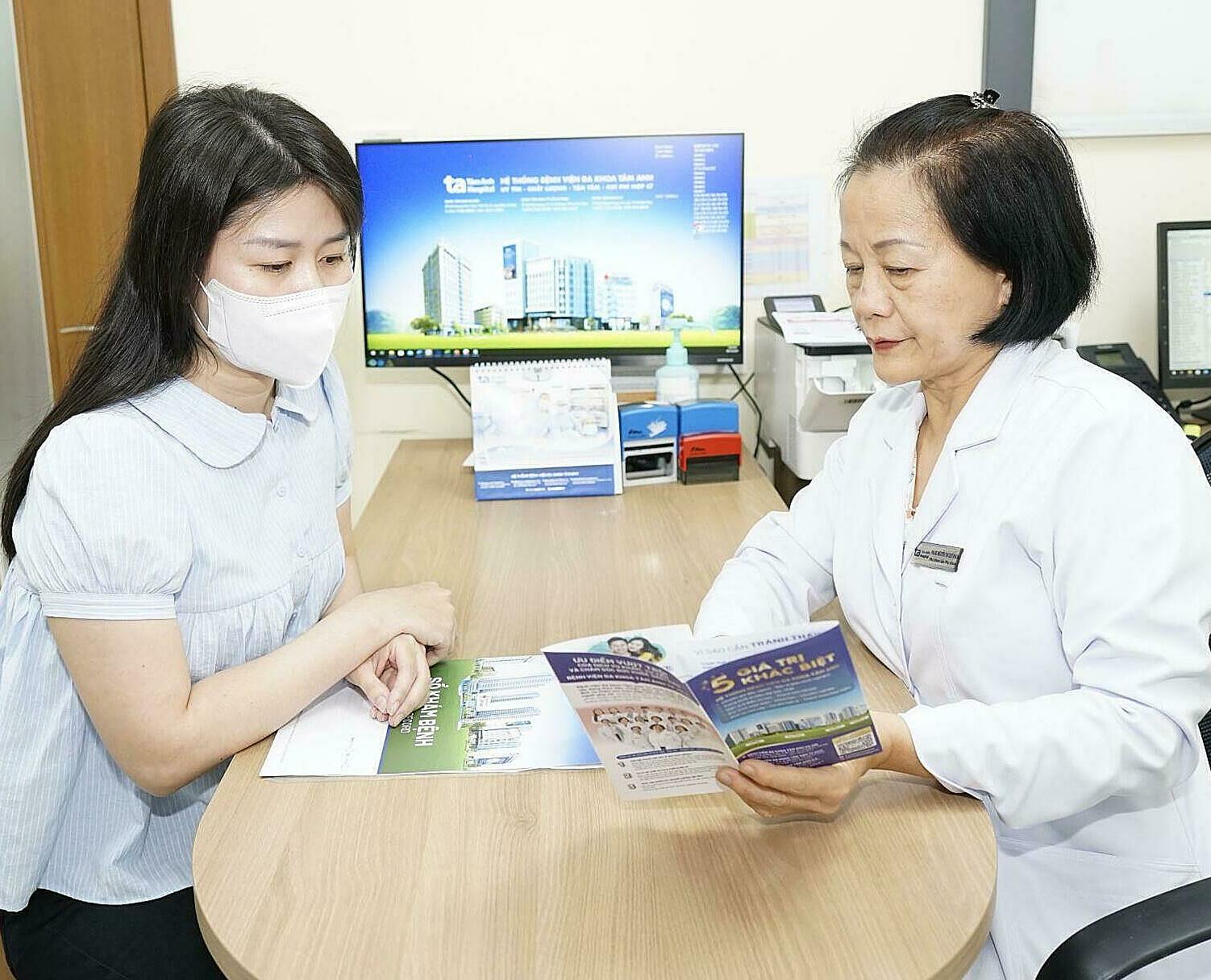HPV is mainly transmitted through sexual contact and skin-to-skin contact. It can also spread through skin-to-mucous membrane contact if there are small scratches. In most cases, HPV infections clear up on their own after a while thanks to the immune system. However, some high-risk HPV strains can cause abnormal cell changes, which may develop into cancer.
Doctor Nguyen Thi Quy Khoa, Deputy Head of the Obstetrics Department at the Tam Anh General Hospital system in Ho Chi Minh City, explains that each HPV type tends to cause disease in a specific location and produces characteristic symptoms. Understanding the characteristics of each HPV type helps raise public awareness, enabling proactive prevention and early screening for dangerous diseases.
Below is a breakdown of HPV types, their associated diseases, and warning signs.
| HPV Type | Related Diseases | Common Symptoms |
| 1, 2, 4, 63 | Plantar warts | Warts appear on the heels or the top of the feet. These rough growths can cause pain and discomfort when walking. |
| 2, 7, 22 | Common warts | Rough, raised warts appear on the hands, feet, elbows, and knees. |
| 3, 10, 28 | Flat warts | Commonly found on the arms, face, and forehead. These warts are flat, slightly raised, reddish-brown or skin-colored, and have a clear border, with a diameter of 2-5 mm. |
| 6, 11, 42, 44 | Genital warts | Small, cauliflower-like or stem-like growths. In women: these may appear on the vulva, anus, cervix, and vagina. In men: on the penis, scrotum, and around the anus. |
| 16, 18, 31, 53, 58 | Anal dysplasia | Abnormal changes in the anal lining (LSIL, HSIL). Patients may be able to feel a lump inside or outside the anus. |
| Highest Risk: 16, 18, 31, 45 - Other High Risks: 33, 35, 39, 51, 52, 56, 58, 59, 66, 68 - Possible High Risk: 26, 53, 73, 82 | Genital cancers | Cervical cancer: Early stages often have no noticeable symptoms. Warning signs include abnormal vaginal bleeding or discharge, and pain during intercourse. Later stages: pelvic pain, back pain, swollen legs, fatigue, and weight loss. Penile cancer: thickened skin, discoloration, lumps or ulcers, and foul-smelling discharge. Vaginal or vulvar cancer: bleeding, abnormal discharge, and persistent itching or burning. |
| 2, 3, 10, 5, 8, 9, 12, 14, 15, 17, 19 , 20, 21, 22, 23, 24, 25, 36, 37, 38, 47, 50 | Epidermodysplasia verruciformis | Flat, scaly, reddish-brown patches and flat, wart-like bumps. Location: face, neck, torso, and around the penis. This condition can progress to skin cancer. |
| 13, 32 | Focal epithelial hyperplasia (mouth) | White to pink bumps appear in the mouth with a slightly pale, smooth, or rough surface texture. |
| 6, 7, 11, 16, 32 | Oral papillomas | Benign, cauliflower-like growths, with or without stalks, white or skin-colored, 1–5 cm in size. Location: palate, tongue, lips. These can last from a few weeks to many years. |
| 16 | Oropharyngeal cancer | Symptoms include: mouth sores, lumps that can be seen or felt through the skin of the neck, swollen tonsils, and difficulty swallowing. |
| 60 | Condyloma acuminatum cysts | Wart-like cysts are a skin condition similar to epidermal cysts, except the lining shows signs of papilloma. |
| 6, 11 | Laryngeal papillomas | Hoarseness, difficulty breathing, chronic cough, and wheezing. Severe cases can cause difficulty swallowing, pneumonia, and respiratory failure. |
The most accurate way to differentiate HPV types is through an HPV DNA test. This test uses an automated DNA extraction system and modern technology to analyze and accurately identify the presence of HPV and determine its risk group. From there, doctors can assess the risk of future diseases and recommend effective preventive measures.
 |
Doctor Quy Khoa advises women on getting vaccinated against HPV-related cervical cancer. Photo: *Thanh Luan* |
Women of reproductive age should undergo regular cervical cancer screening with a Pap smear or HPV DNA test, starting at age 21 (Pap) or 30 (HPV test) depending on national guidelines. Maintaining a healthy lifestyle, practicing proper genital hygiene, using condoms during intercourse, and not smoking can also help reduce the risk of HPV infection.
Doctor Quy Khoa states that HPV is common but preventable and manageable with early detection. Proactive vaccination and proper treatment can protect reproductive health and reduce the burden of cancer. The HPV vaccine is highly effective if administered before sexual activity and is available for both men and women.
Tue Diem
| Readers can submit questions about obstetrics and gynecology here for doctors to answer. |












